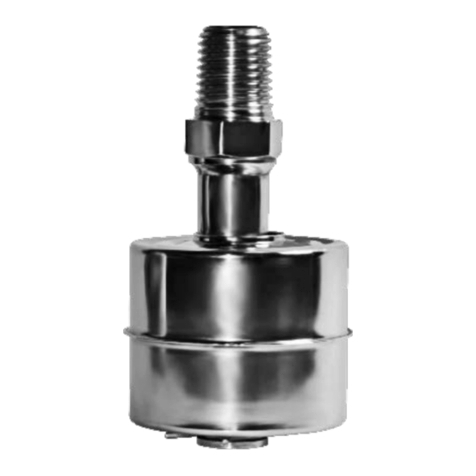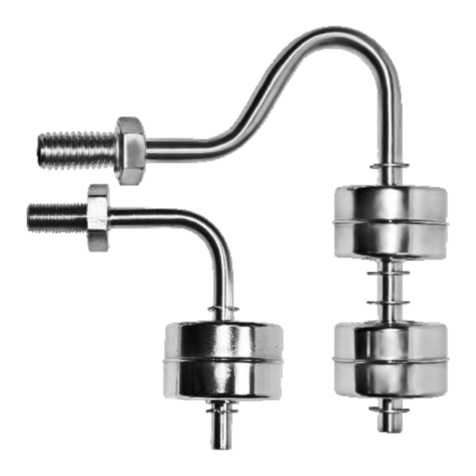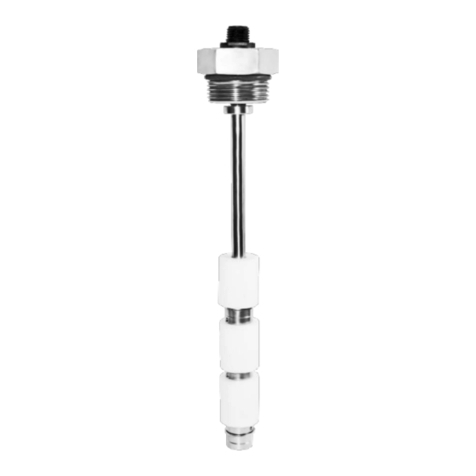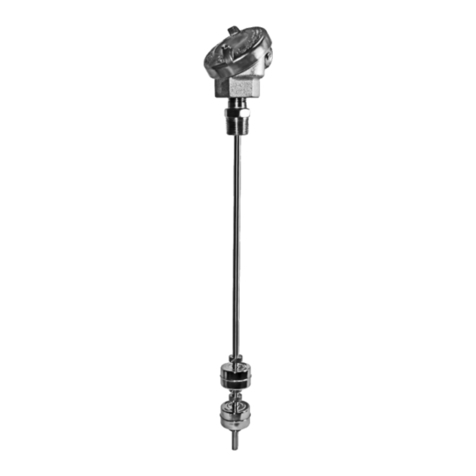
2L072 SIDE-MOUNTED LIQUID LEVEL FLOAT SWITCH WITH MANUAL RESET
This manual provides information on the L072 Side-
Mounted Liquid Level Float Switch with Manual
Reset. It is important that all instructions are read
carefullyandfollowedsequentially.Detailedinstructions
are included in the Complete Installation section of
this manual.
Conventions Used in this Manual
Certain conventions are used in this manual to convey
specic types of information. General technical
material, support data and safety information are
presented in narrative form. The following styles are
used for notes, cautions and warnings:
Notes
Notes contain information that augment or clarify
an operating step. Notes do not normally contain
actions and often follow the procedural steps to
which they refer.
Cautions
Cautions alert the technician to special conditions
that could injure personnel, damage equipment, or
reduce a component’s mechanical integrity. Cautions
are also used to alert the technician of unsafe
practices, the need for special protective equipment,
or specic materials. In this manual, a caution
indicates a potentially hazardous situation which, if
not avoided, may result in minor to moderate injury.
Warnings
Warnings identify potentially dangerous situations, or
serious hazards. In this manual, a warning indicates
an imminently hazardous situation which, if not
avoided, may result in serious injury or death.
Safety Messages
Follow all standard industry procedures for servicing
electrical and computer equipment when working with,
or around high voltage. Always shut off the power
supply before touching any components.
WARNING!
EXPLOSION HAZARD. DO NOT CONNECT OR
DISCONNECT THE EQUIPMENT UNLESS THE POWER
HAS BEEN SWITCHED OFF.
ATTENTION!
RISQUE D’EXPLOSION. NE PAS BRANCHER OU
DÉBRANCHER L’APPAREIL, SAUF L’ALIMENTATION
A ÉTÉ COUPÉE.
Low Voltage Directive
For use in Installation Category II, Pollution Degree 2.
If the equipment is used in a manner not specied by
the manufacturer, protection provided by equipment
may be impaired.
Notice of Copyright and Limitations
Copyright ©2022 AMETEK Magnetrol USA, LLC
All rights reserved.
Solutions With Innovation reserves the right to make
changes to the product described in this manual at
any time without notice. Solutions With Innovation
makes no warranty with respect to the accuracy of the
information in this manual.
Warranty
All Solutions With Innovation Mechanical Level and
Flow Controls are warranted free of defects in materials
and workmanship for one full year from the date of
the original factory shipment. If returned within the
warranty period; and, upon factory inspection of
the control, the cause of the claim is determined to
be covered under the warranty; then, Solutions With
Innovation will repair or replace the product at no cost
to the purchaser (or owner) other than transportation.
Solutions With Innovation shall not be liable for
misapplication, labor claims, direct or consequential
damage, or expenses arising from the installation or
use of the equipment. There are no other warranties
expressed or implied, except special written warranties
covering specific Solutions With Innovation products.
Quality Assurance
The Quality Assurance System in place at Solutions
With Innovation guarantees the highest level
of quality throughout the company. Solutions With
Innovation is committed to providing full customer
satisfaction; both in quality products and in quality
service.
Contacts
Phone: 203-729-6434 Mon-Fri, 9 AM - 5 PM EST Fax:
203-729-0541 for General Inquiries
READ THIS MANUAL PRIOR TO INSTALLATION
































